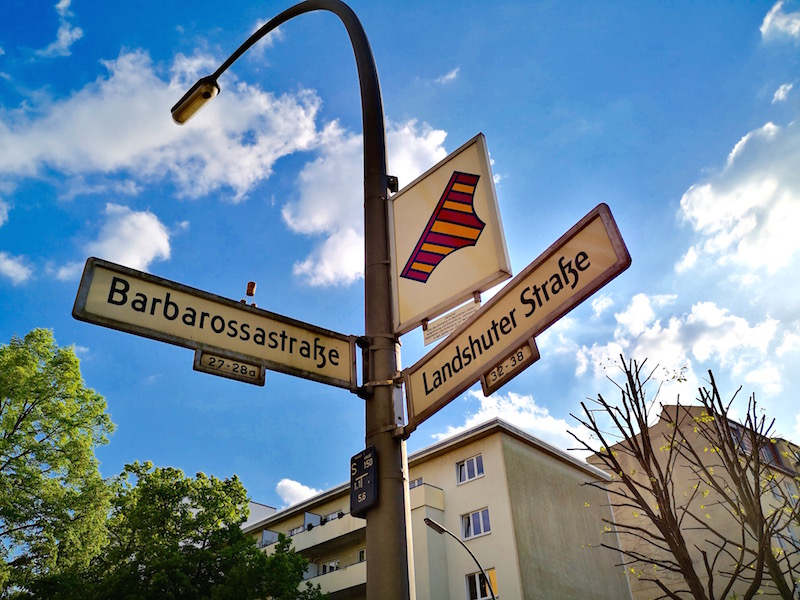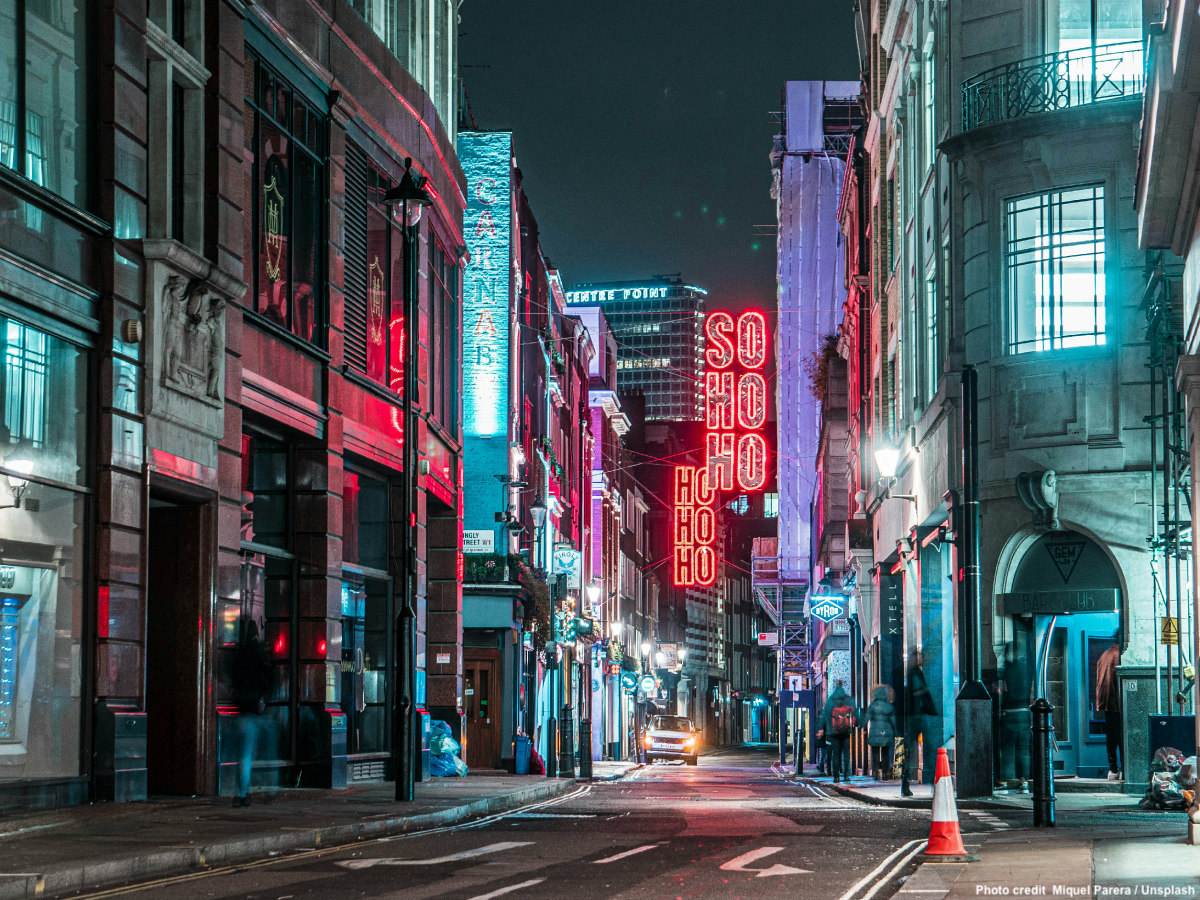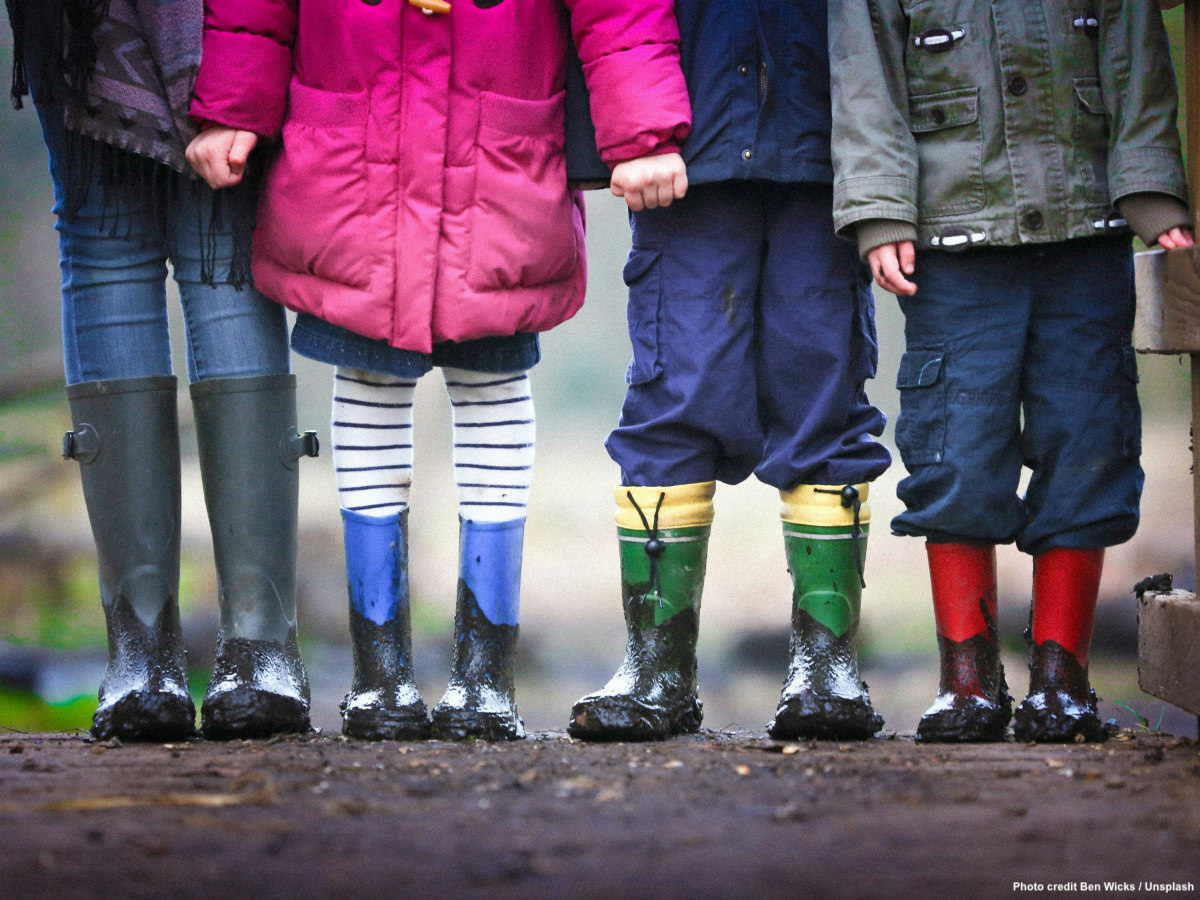Remembering a city’s history can greatly empower its citizen’s commitment to mindfulness; because had at any one time a slightly different path been taken, had a decision swung a slightly different way, the entire course of history would have been different. Signs along the former Jewish neighbourhood of West Berlin known as the Bavarian Quarter (‘Bayerische Viertel’) raises the question of how the destiny of their Jewish neighbours didn’t change course. This public art intervention is called ‘Places of Remembrance’.
A sort of ‘walking memorial’ along this beautiful neighbourhood is meant to show that the fate of German Jews was not a sudden, irreversible occurrence, but rather a slow process consisting of dozens of rules and laws which culminated, after a number of years, in the deportation and murder of thousands of people.
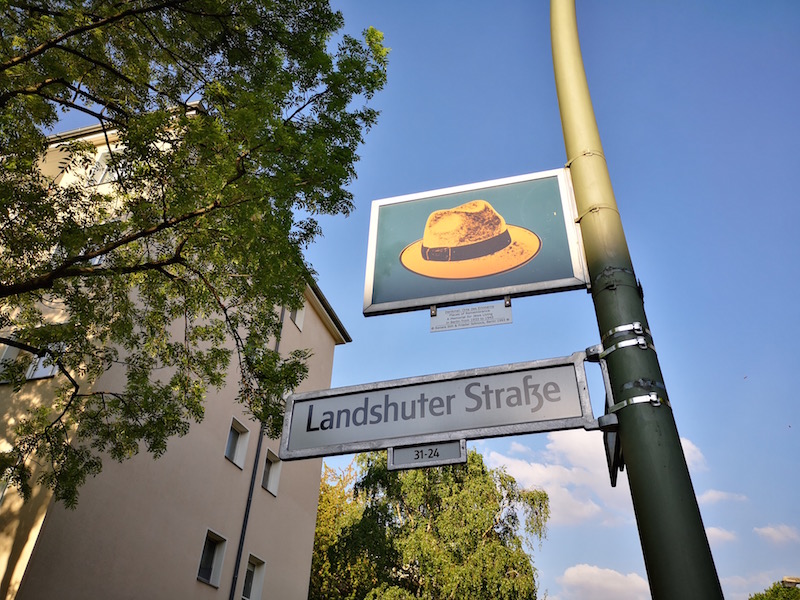
The artists Renata Sith and Frieder Schnock put up 80 brightly printed signs on lampposts. Most of the short black and white texts on the backs of these framed signs are condensed versions of rules and regulations passed from 1933 to 1945 and correspond in numerous ways with the coloured images on the front. Together, the words and images force passers-by to remember the almost-forgotten history of this neighbourhood.
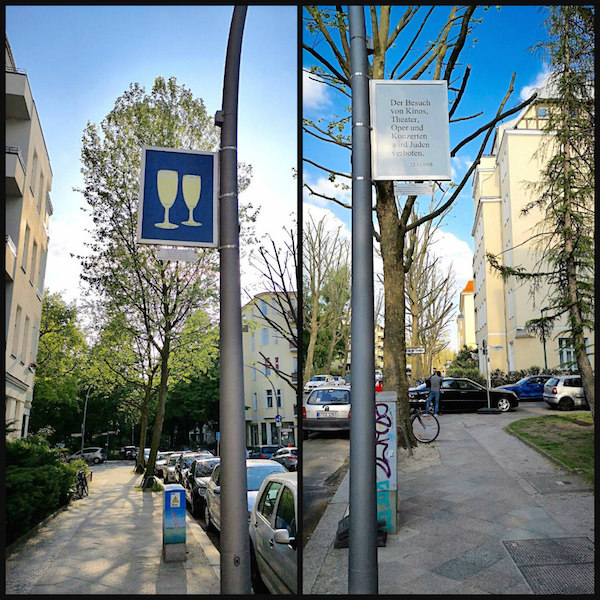
The decrees set by the National Socialists systematically forced Jews out of daily life and gradually robbed them of their basic rights. Isolation and discrimination paved the way for deportations and mass murder.
This unsettling memorial has been living with the neighbours of the ‘Bayerische Viertel’ for quite a long time and it is there to stay. It was on June 4, 1993 when the police in the Schöneberg district of Berlin received a number of telephone calls from irate neighbours claiming that anti-Semitic signs bearing such provocative inscriptions as ‘Ban on Jewish musicians. 31.3.1935’ and ‘Jews may no longer keep pets. 15.2.1942’ were bolted to lampposts around the neighbourhood.
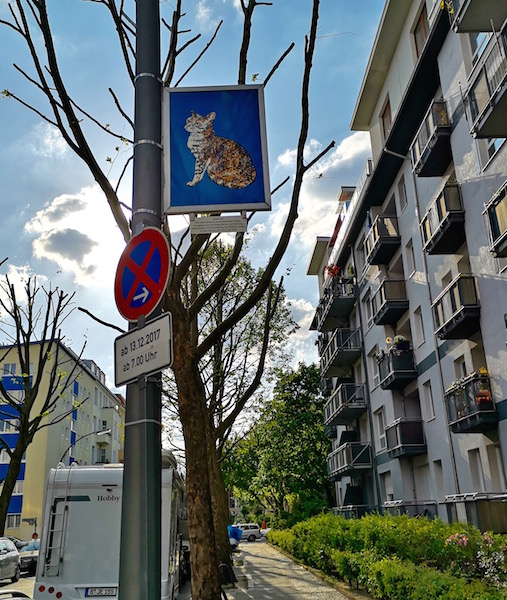
The memorial re-creates on linguistic and pictorial levels the political violence that had gone on in everyday life and that translated into house evictions and other events that neighbours were witnessing on their streets.
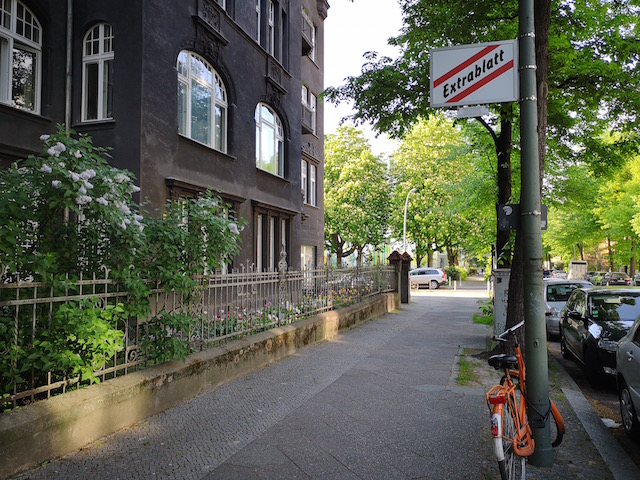
This public art installation offers a simple piece of knowledge where history and mindfulness complement each other; because we know that citizens have the power in this moment, right now, to make a positive change – to create our own history, at least in cities.
The back side of the sign in the cover picture reads ‘Baths and swimming pools in Berlin are closed to Jews / December 3, 1938.
Some parts of this text have been taken from the project’s essay written by Caroline Wiedmer.
